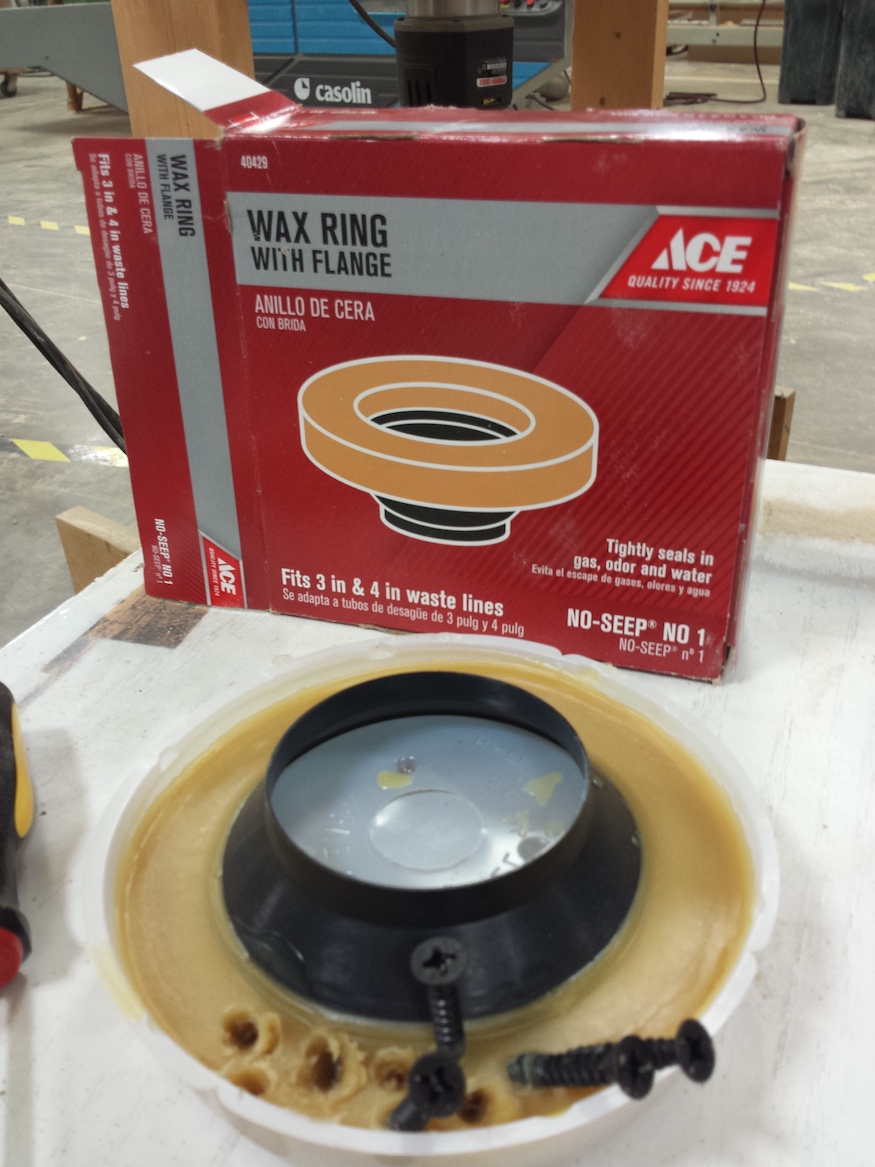Few things are more frustrating than snapping the head off a delicate brass screw while installing custom doors or fine furniture. This common woodworking nightmare has a surprisingly simple solution hiding in your plumbing supplies – a toilet wax ring. Read on to learn how to prevent broken screws in wood working.
Why Brass Screws Break?
Brass screws, while beautiful, are softer than steel. When driven into dense hardwoods like oak or maple, friction builds up in the screw threads. Without proper lubrication, this causes:
- Twisted-off screw heads
- Stripped screwdriver slots
- Misaligned hinges from forced installation
The Wax Ring Solution
For a few dollars spent at your local hardware store, you can use that same wax ring to prevent broken screws in wood working, especially those soft brass screws.

A $3 toilet wax ring becomes the perfect workshop companion:
- Press screws into the wax–Just push the screw threads into the ring 2-3 times
- Threads stay lubricated – The wax coats evenly without messy liquids
- No residue concerns–Unlike oils, wax won’t interfere with finishes
Why This Outperforms Other Methods
- Better than soap–Won’t corrode metal over time
- Safer than WD-40–No oily residue to stain wood
- More precise than beeswax–Consistent coating without drips
Pro Tips for Flawless Results
- Use square-drive screws instead of Phillips for better torque control
- Drill proper pilot holes (85% of screw diameter for hardwoods)
- Apply paraffin wax to screw holes for extra protection in end grain
Beyond Door Hinges
This little trick works not only for doors, but any time you are boring screws into hard, dense woods.
Try it on:
- Cabinet hardware installation
- Musical instrument repairs
- Antique furniture restoration
Fun Fact: The same wax rings can lubricate:
- Wooden thread taps
- Handplane adjustment screws
- Even stubborn zippers!
Learn more about our process or view some of our recent work in our gallery.